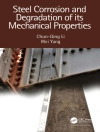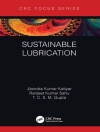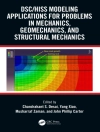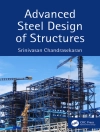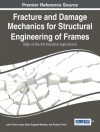This book is primarily for a first one-semester course on CFD; in mechanical, chemical, and aeronautical engineering. Almost all the existing books on CFD assume knowledge of mathematics in general and differential calculus as well as numerical methods in particular; thus, limiting the readership mostly to the postgraduate curriculum. In this book, an attempt is made to simplify the subject even for readers who have little or no experience in CFD, and without prior knowledge of fluid-dynamics, heattransfer and numerical-methods. The major emphasis is on simplification of the mathematics involved by presenting physical-law (instead of the traditional differential equations) based algebraic-formulations, discussions, and solution-methodology. The physical law based simplified CFD approach (proposed in this book for the first time) keeps the level of mathematics to school education, and also allows the reader to intuitively get started with the computer-programming. Another distinguishing feature of the present book is to effectively link the theory with the computer-program (code). This is done with more pictorial as well as detailed explanation of the numerical methodology. Furthermore, the present book is structured for a module-by-module code-development of the two-dimensional numerical formulation; the codes are given for 2D heat conduction, advection and convection. The present subject involves learning to develop and effectively use a product – a CFD software. The details for the CFD development presented here is the main part of a CFD software. Furthermore, CFD application and analysis are presented by carefully designed example as well as exercise problems; not only limited to fluid dynamics but also includes heat transfer. The reader is trained for a job as CFD developer as well as CFD application engineer; and can also lead to start-ups on the development of ‘apps’ (customized CFD software) for various engineering applications.
‘Atul has championed the finite volume method which is now the industry standard. He knows the conventional method of discretizing differential equations but has never been satisfied with it. As a result, he has developed a principle that physical laws that characterize the differential equations should be reflected at every stage of discretization and every stage of approximation. This new CFD book is comprehensive and has a stamp of originality of the author. It will bring students closer to the subject and enable them to contribute to it.’
–Dr. K. Muralidhar, IIT Kanpur, INDIA
Tabella dei contenuti
I Introduction and Essentials 1
1 Introduction 3
1.1 CFD: What is it? 3
1.2 CFD: Why to study? 15
1.3 Novelty, Scope, and Purpose of this Book 16
2 Introduction to CFD: Development, Application, and Analysis 23
2.1 CFD Development 23
2.2 CFD Application 35
2.3 CFD Analysis 38
2.4 Closure 39
3 Essentials of Fluid-Dynamics and Heat-Transfer for CFD 41
3.1 Physical Laws 42
3.2 Momentum and Energy Transport Mechanisms 46
3.3 Physical Law based Differential Formulation 48
3.4 Generalized Volumetric and Flux Terms, and their Dif-ferential Formulation 57
3.5 Mathematical Formulation 63
3.6 Closure 71
4 Essentials of Numerical-Methods for CFD 73
4.1 Finite Difference Method: A Differential to Algebraic Formulation for Governing PDE and BCs 75
4.2 Iterative Solution of System of LAEs for a Flow Property 93
4.3 Numerical Differentiation for Local Engineering-Parameters 105
4.4 Numerical Integration for the Total value of Engineering-Parameters 110
4.5 Closure 116
II CFD for a Cartesian-Geometry 119
5 Computational Heat Conduction 121
5.1 Physical Law based Finite Volume Method 122
5.2 Finite Difference Method for Boundary Conditions 138
5.3 Flux based Solution Methodology on a Uniform Grid: Explicit-Method 139
5.4 Coe-cients of LAEs based Solution Methodology on a Non-Uniform Grid: Explicit and Implicit Method 154
6 Computational Heat Advection 179
6.1 Physical Law based Finite Volume Method 180
6.2 Flux based Solution Methodology on a Uniform Grid: Explicit-Method 194
6.3 Coe-cients of LAEs based Solution Methodology on a Non-Uniform Grid: Explicit and Implicit Method 207
7 Computational Heat Convection 229
7.1 Physical Law based Finite Volume Method 229
7.2 Flux based Solution Methodology on a Uniform Grid: Explicit-Method 235
7.3 Coe-cients of LAEs based Solution Methodology on a Non-Uniform Grid: Explicit and Implicit Method 242
8 Computational Fluid Dynamics: Physical Law based Finite Volume Method 251
8.1 Generalized Variables for the Combined Heat and Fluid Flow 252
8.2 Conservation Laws for a Control Volume 255
8.3 Algebraic Formulation 259
8.4 Approximations 260
8.5 Approximated Algebraic Formulation 263
8.6 Closure 269
9 Computational Fluid Dynamics on a Staggered Grid 271
9.1 Challenges in the CFD Development 273
9.2 A Staggered Grid to avoid Pressure-Velocity Decoupling 275
9.3 Physical Law based FVM for a Staggered Grid 277
9.4 Flux based Solution Methodology on a Uniform Grid: Semi-Explicit Method 281
9.5 Initial and Boundary Conditions 300
10 Computational Fluid Dynamics on a Co-located Grid 309
10.1 Momentum-Interpolation Method: Strategy to avoid the Pressure-Velocity Decoupling on a Co-located Grid 310
10.2 Coe-cients of LAEs based Solution Methodology on a Non-Uniform Grid: Semi-Explicit and Semi-Implicit Method 314
III CFD for a Complex-Geometry 331
11 Computational Heat Conduction on a Curvilinear Grid 333
11.1 Curvilinear Grid Generation 333
11.2 Physical Law based Finite Volume Method 343
11.3 Computation of Geometrical Properties 349
11.4 Flux based Solution Methodology 352
12 Computational Fluid Dynamics on a Curvilinear Grid 361
12.1 Physical Law based Finite Volume Method 361
12.2 Solution Methodology: Semi-Explicit Method 372
Problems 380
References 383
Index 389
Circa l’autore
Atul Sharma, IIT Bombay, India
Dr. Sharma is an Assistant Professor in the Department of Mechanical Engineering at the Indian Institute of Technology, Bombay. His main research interests include computational fluid dynamics, simulation of moving boundary problems, and simulation of convective heat transfer for external and internal flows. He currently teaches courses on Fluid Mechanics, Heat Transfer, Fluid Dynamics, Computational Methods in Thermal and Fluid Engineering, and Computational Fluid Dynamics and Heat Transfer.




